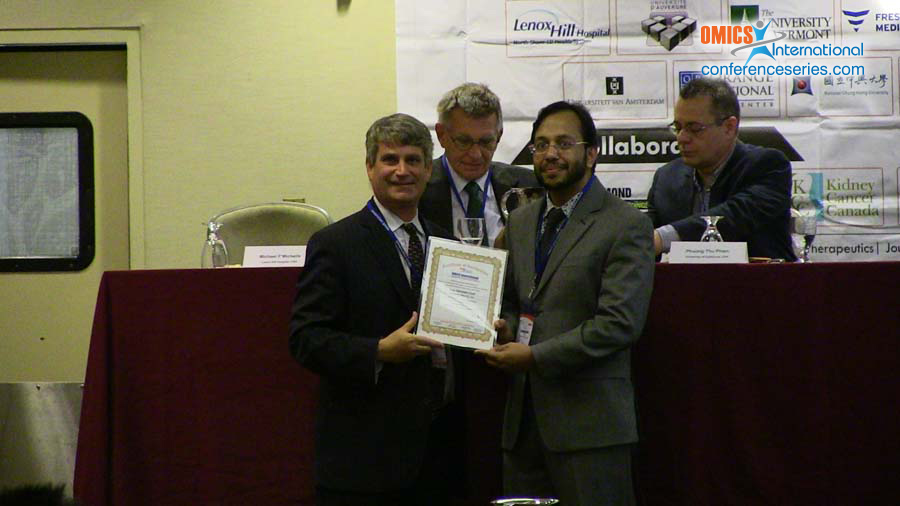
Narender Goel
Montefiore Medical Center & Albert Einstein College of Medicine, USA
Title: Vascular Access Placement in Patients with Incident CKD Stage 4 and 5 attending an Inner City Nephrology Clinic: A Cohort Study and Survey of Providers
Biography
Biography: Narender Goel
Abstract
The majority of incident hemodialysis (HD) patients initiate dialysis via catheters. We sought to identify factors associated with initiating hemodialysis with a functioning AV access. We conducted a retrospective chart review of all adult patients, age >18 years seeing a nephrologist with a diagnosis of CKD stage 4 or 5 during the study period between 06/01/2011 and 08/31/2012 and conducted a survey of providers about the process. The 221 patients (56% female) in the study had median age of 66 years (IQR, 57-75) and were followed for a median of 1.26 years (IQR 0.6-1.68). By the end of study, 48 patients had initiated dialysis. Thirty-four of the patients started dialysis with a catheter (1 failed and 10 maturing AVFs), 9 with an AVF and 5 with an AVG. During the study period, 61 total AV accesses were placed (54 AVF and 7 AVG). A higher urinary protein/ creatinine ratio and a lower eGFR at study entry were associated with AV access placement and dialysis initiation. A greater number of nephrology visits were associated with AV access creation but not with the initiation of dialysis. Hospitalizations and hospitalizations with an episode of acute kidney injury were strongly associated with dialysis initiation (odds ratio (OR) 13.0 (95% confidence interval (CI) 2.3 to 73.3, p-value = 0.004) and OR 6.6 (95% CI 1.9 to 22.8, p-value = 0.003)). Nephrologists may not be referring the correct patients to get an AV access surgery. A hospitalization with AKI is strongly associated with the need for dialysis in patients with stage 4 and 5 CKD.
Speaker Presentations
Speaker PDFs
Speaker PPTs Click Here


